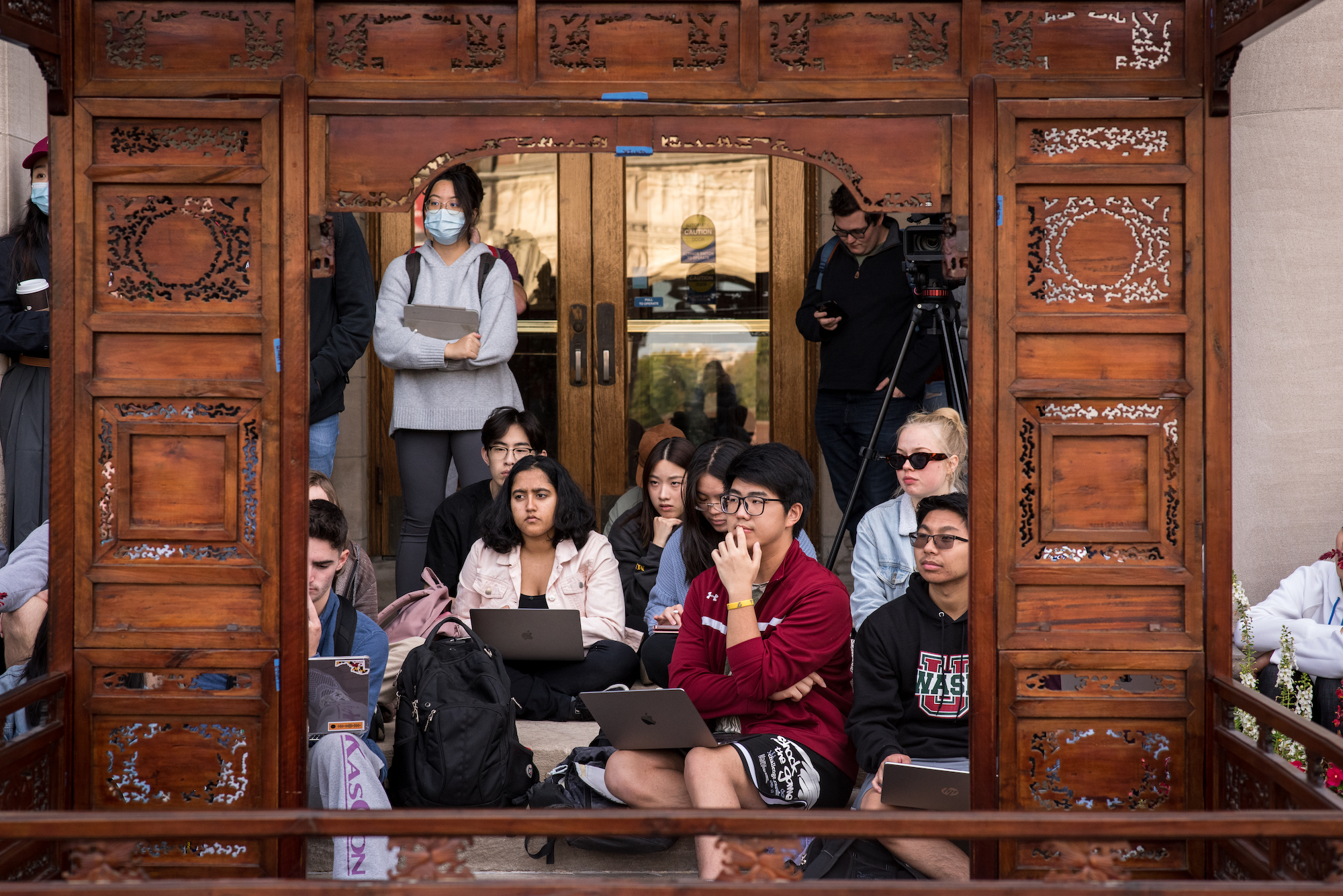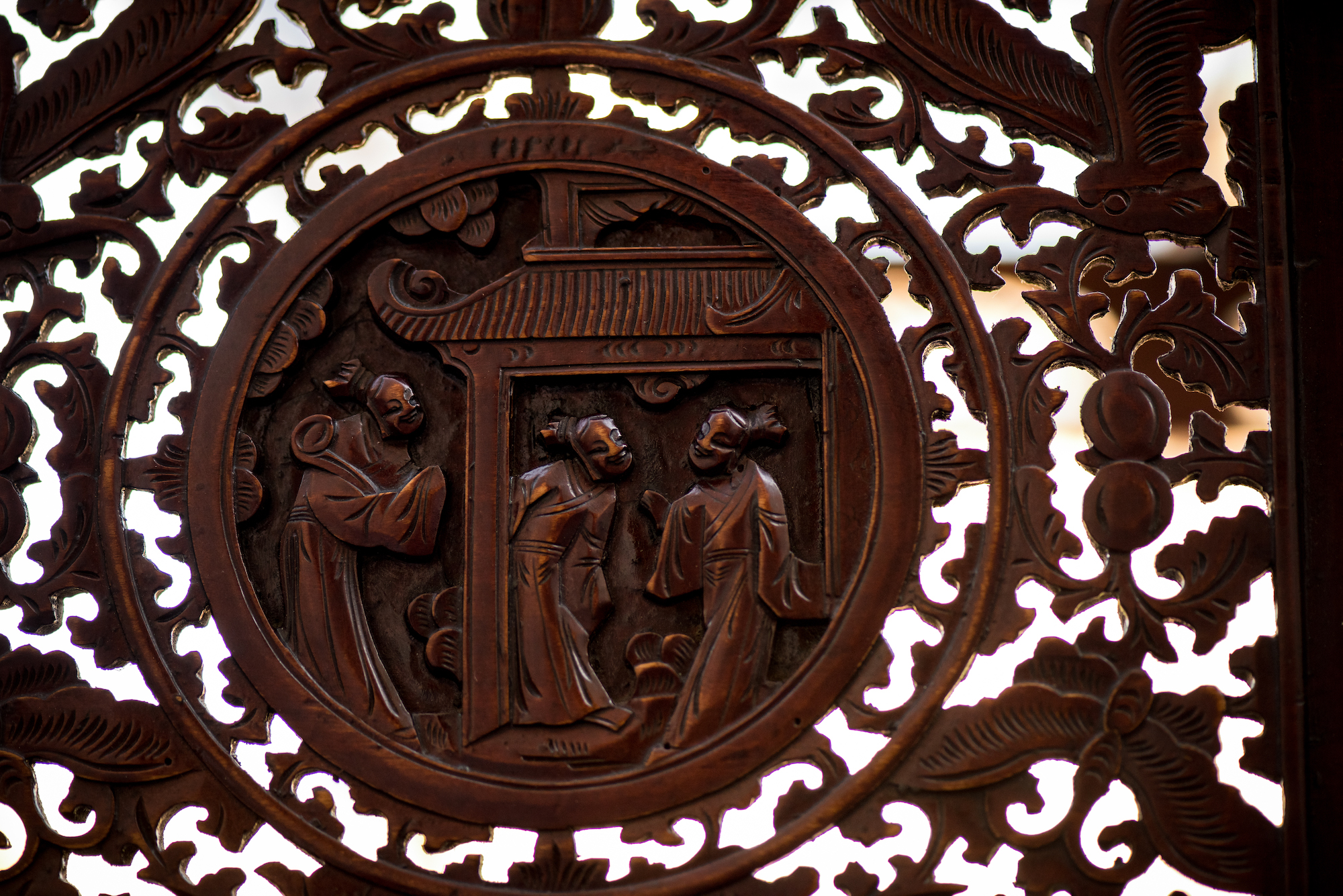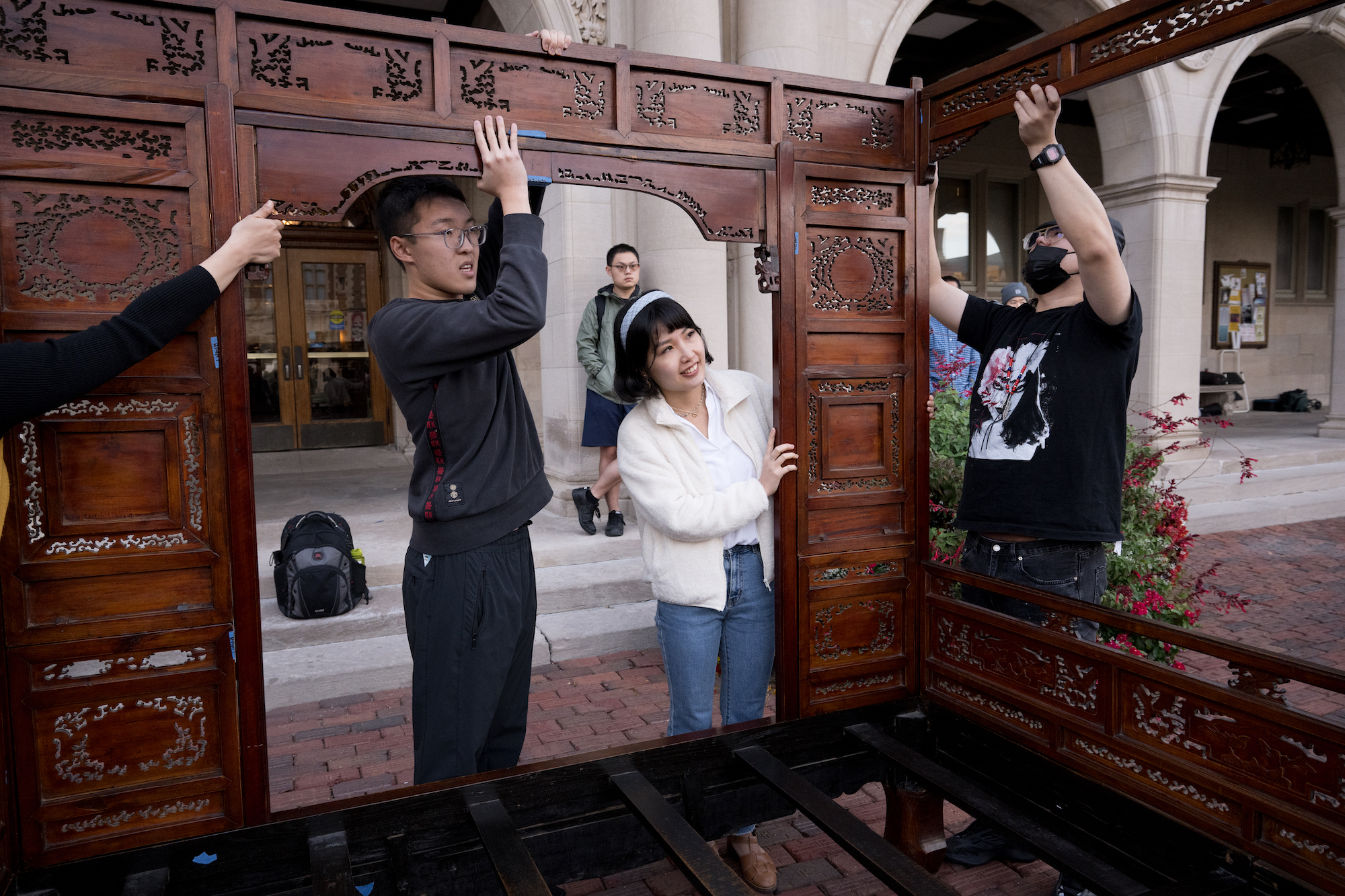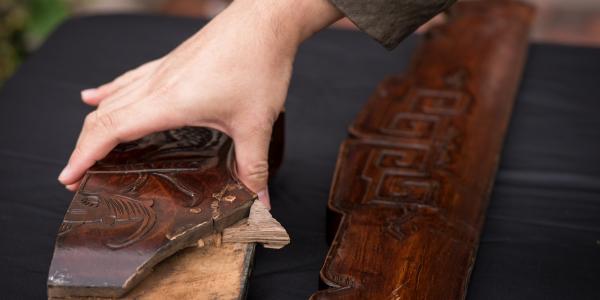The acquisition of a 19th-century Chinese bed allows Arts & Sciences students to study cultural history up close, from furniture assembly to 3D modeling.
On a cool Saturday afternoon in October, Zhao Ma’s students gathered in Brookings Quadrangle to assemble a Qing-era bed. Ma, associate professor of modern Chinese history and culture, acquired the antique nearly a year ago, storing it disassembled in his office while he considered ways that the elaborately carved piece of furniture might serve as a useful teaching tool.
Cultural historians often analyze household objects as if they were literary texts, studying the way that the material culture of everyday life reflects social and economic mores. In Ma’s Chinese civilization course students visit the St. Louis Art Museum to analyze vases and silks up-close. Just outside of Brookings Hall, they got even closer, learning how the parts of a 100-year-old marriage bed felt to the people who slept in it every night.
“In a museum, you only can see what the curator wants you to see, right in front of the glass panel that separates you from the display,” Ma said. “But here, students see the bed from different angles, curating their own perspective. Getting close to an object like that reveals the secrets of the craftsmanship and design process.”

From marriage procession to the WashU Quad
Despite being destined for one of the most private spaces of the home, a marriage bed constructed during the Qing era served an important public function as a display of wealth and status. Beds told an important story about a family’s religious, social, and economic role in society.
The Qing dynasty lasted from 1644–1911, but the materials and construction of the bed suggest that a family commissioned its construction sometime in the late 19th or early 20th century. At that time, China underwent significant cultural and social changes. Traditional wedding rituals came under attack by reformers, but they remained popular among ordinary people and held influence over furniture design when families prepared wedding ceremonies.

The parents of a bride would commission a bed not only as a demonstration of their wealth and their daughter’s importance, but also as a material illustration of their family identity. They would disassemble the bed before the wedding ceremony and parade it to the couple’s new home. The elaborate motifs carved into the bed panels held information about the new family’s social standing and what the couple’s parents hoped would come from the union.
On the Quad, Ma’s students crowded around the bed with laptops and printouts in hand illustrating common motifs from Chinese traditional furniture of this era. One student noted the imagery of grapes, pomegranates, and melons. Xinyue Gao, a doctoral student in Chinese language and literature and a member of Ma’s research team, reminded the student that in the early 19th century farmers had not yet cultivated seedless grapes and melons, suggesting a fertility motif.
“I'm excited to learn about the carvings and their cultural significance,” said Bow Bajela, a sophomore in Ma’s course. “We’re going to have to explain their significance later. I’m curious to know what the carvings look like up close.”
Gao says that observing and touching the bed let students move past the kind of evidence they normally use in cultural history classrooms.
“When we study Chinese history, especially in the United States, we rely on textual evidence like historical records,” Gao said. “The carvings on this bed are more typical of everyday, folk art that would be bought and produced by ordinary people. By getting to study the bed in greater detail, students have the chance to encounter an object of great importance to everyday life in the Qing era.”

The “hardest Ikea kit ever”
Over the course of its history, the bed has been damaged and repaired numerous times. Before the group assembly project, Ma has consulted Heather White, a local objects conservator, to begin repair work on the bed and speak to his students about what the restoration reveals about the bed’s construction and design.
Compared to the hardwood Qing-era furniture typically displayed in museums, Chinese artisans crafted this bed out of softer, more affordable woods like elm, poplar, and cypress. The bed also uses mortise and tenon construction, meaning that it contains no nails or glue. At the October event, Ma and a group of eleven graduate and undergraduate students worked together to hold pieces in position while slotting connectors into place.
Gao described it as a kind of nightmare Ikea furniture kit.
“The last piece at the top of the bed keeps everything interlocked and in place,” Gao said. “I’m really excited that it actually worked.”
Because of the soft wood used in the construction and the bed’s age, some pieces cracked during assembly. But even that damage provided an opportunity to learn something new. Ma showed his students one of the leg pieces that developed a crack while being moved into place.
“You can see a Chinese character here. It was marked onto the leg by the original craftsman and tells you that this piece goes on the back of the bed,” Ma said. “From this mark we can glean insights about the craftsman’s literacy and how the bed was assembled originally.”

Looking forward with 3D modeling
In addition to giving current students an opportunity for hands-on construction and up-close analysis, Ma received a grant from the Humanities Digital Workshop to work with the Caleres Fabrication Studio in the Sam Fox School of Design & Visual arts to create a 3D model of the bed for future use in the classroom. Greg Guan and Max Liu, both undergraduate students in Sam Fox, scan each component, creating a model that students will be able to manipulate in future iterations of Ma’s Chinese civilization course.
“The modeling technology we use allows us to collect detailed information from an object,” said Guan. “We’re able to capture all of the different textures in the wood to create what is essentially a one-to-one model of the bed.”
Eventually, Ma would like to donate the bed to a museum for permanent display, but first he says that the bed provides his students with a rare chance to study an object layered with cultural symbolism up-close — whether in-person on the Quad or digitally in future semesters. With the 3D model, he plans to let students rearrange and even add new elements to the bed’s motif, creating their own design for a marriage bed. In doing so, he hopes to create a long-lasting way for students to interact with and learn from a unique artifact beyond the curator’s pane of glass.





